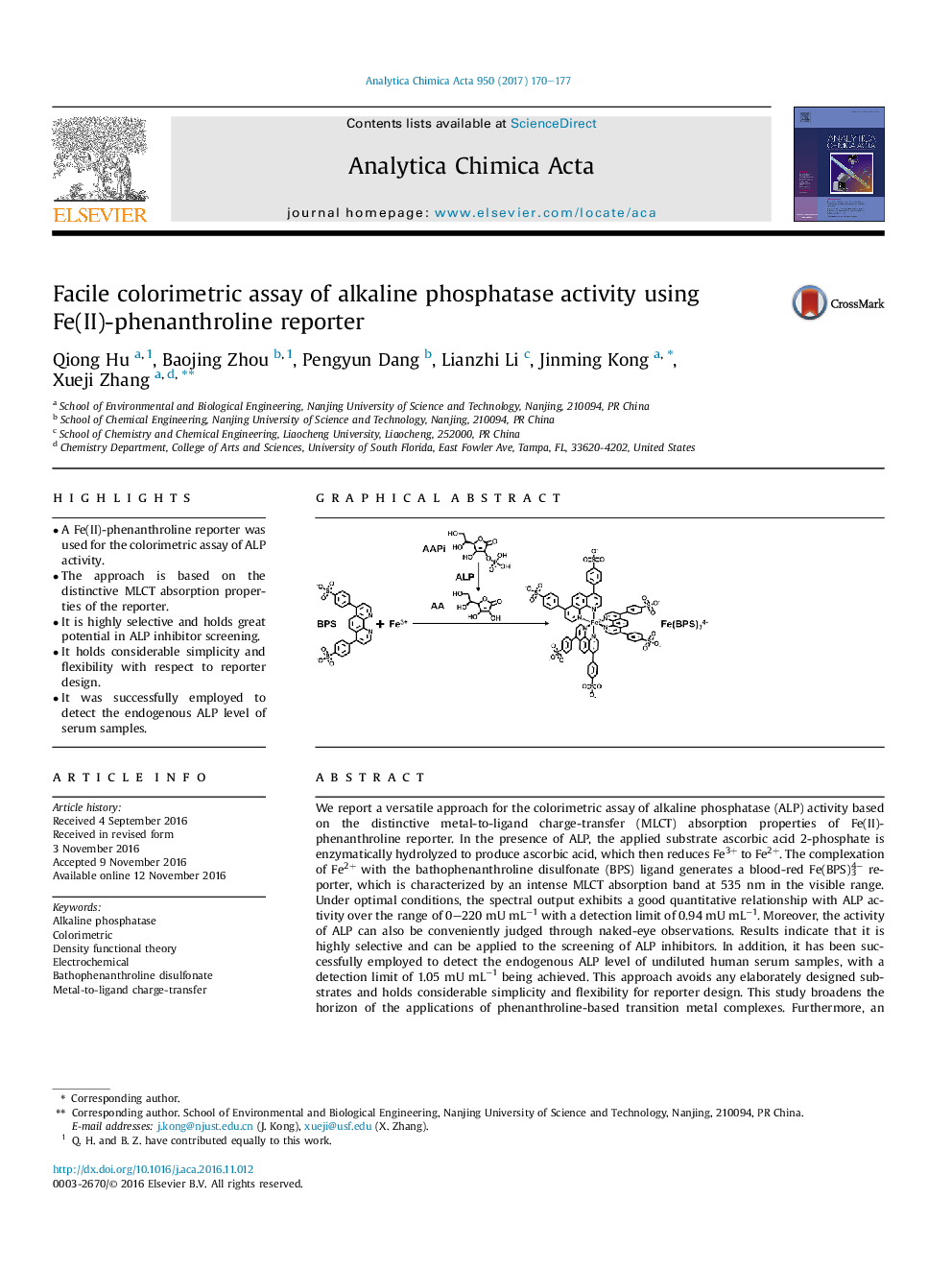| Article ID | Journal | Published Year | Pages | File Type |
|---|---|---|---|---|
| 5131079 | Analytica Chimica Acta | 2017 | 8 Pages |
â¢A Fe(II)-phenanthroline reporter was used for the colorimetric assay of ALP activity.â¢The approach is based on the distinctive MLCT absorption properties of the reporter.â¢It is highly selective and holds great potential in ALP inhibitor screening.â¢It holds considerable simplicity and flexibility with respect to reporter design.â¢It was successfully employed to detect the endogenous ALP level of serum samples.
We report a versatile approach for the colorimetric assay of alkaline phosphatase (ALP) activity based on the distinctive metal-to-ligand charge-transfer (MLCT) absorption properties of Fe(II)-phenanthroline reporter. In the presence of ALP, the applied substrate ascorbic acid 2-phosphate is enzymatically hydrolyzed to produce ascorbic acid, which then reduces Fe3+ to Fe2+. The complexation of Fe2+ with the bathophenanthroline disulfonate (BPS) ligand generates a blood-red Fe(BPS)34â reporter, which is characterized by an intense MLCT absorption band at 535Â nm in the visible range. Under optimal conditions, the spectral output exhibits a good quantitative relationship with ALP activity over the range of 0-220 mU mLâ1 with a detection limit of 0.94 mU mLâ1. Moreover, the activity of ALP can also be conveniently judged through naked-eye observations. Results indicate that it is highly selective and can be applied to the screening of ALP inhibitors. In addition, it has been successfully employed to detect the endogenous ALP level of undiluted human serum samples, with a detection limit of 1.05 mU mLâ1 being achieved. This approach avoids any elaborately designed substrates and holds considerable simplicity and flexibility for reporter design. This study broadens the horizon of the applications of phenanthroline-based transition metal complexes. Furthermore, an efficient and practical method like this has the potential to be widely used in clinical applications and in the point-of-care testing.
Graphical abstractIn this work, a versatile approach is reported for the colorimetric assay of alkaline phosphatase (ALP) activity on the basis of the distinctive metal-to-ligand charge-transfer (MLCT) absorption properties of Fe(II)-phenanthroline complex. The limit of detection is lower than that of most of the reported colorimetric methods. It is highly selective and can be applied to the screening of ALP inhibitors. Our approach features high interference immunity and reproducibility, and is highly immune to false-positive results. In addition, it has been successfully employed to detect the endogenous ALP level of human serum samples, and a detection limit of 1.05 mU mLâ1 was achieved. This approach is highly efficient and involves only a single step. It avoids elaborately designed substrates, and in particular all chemicals used in this approach are commercially available and inexpensive.Download high-res image (133KB)Download full-size image
